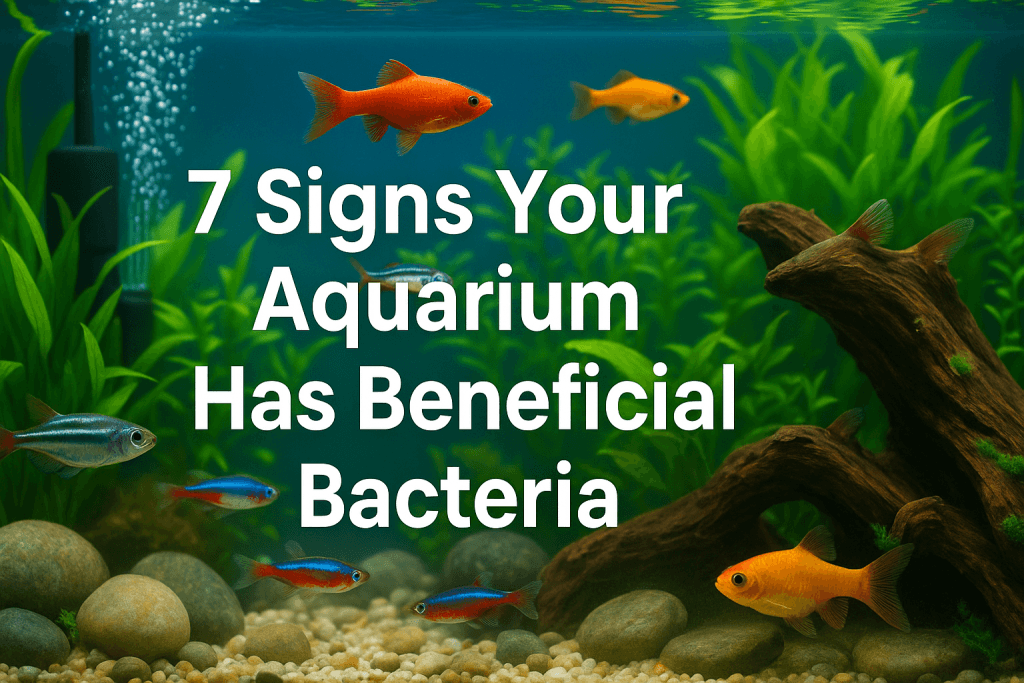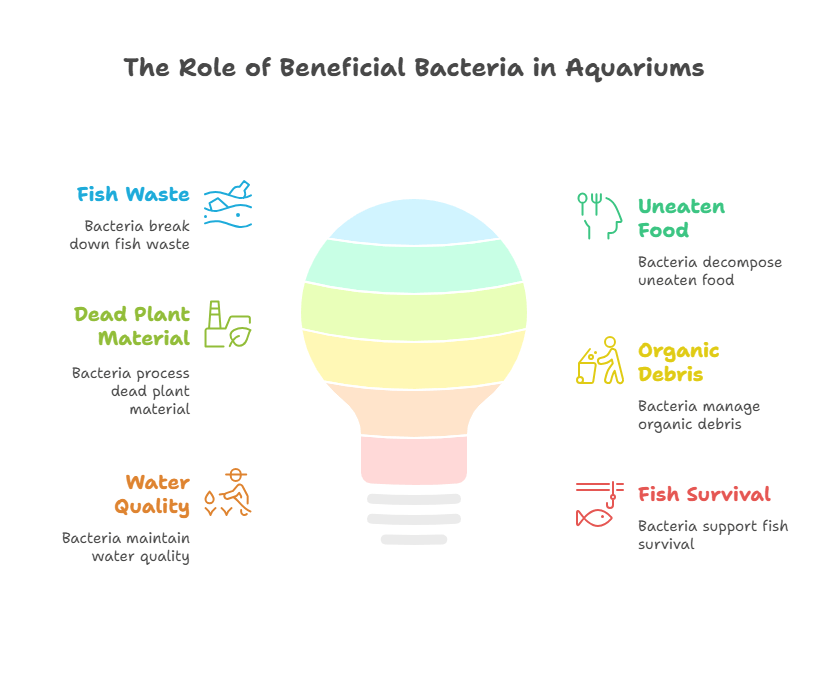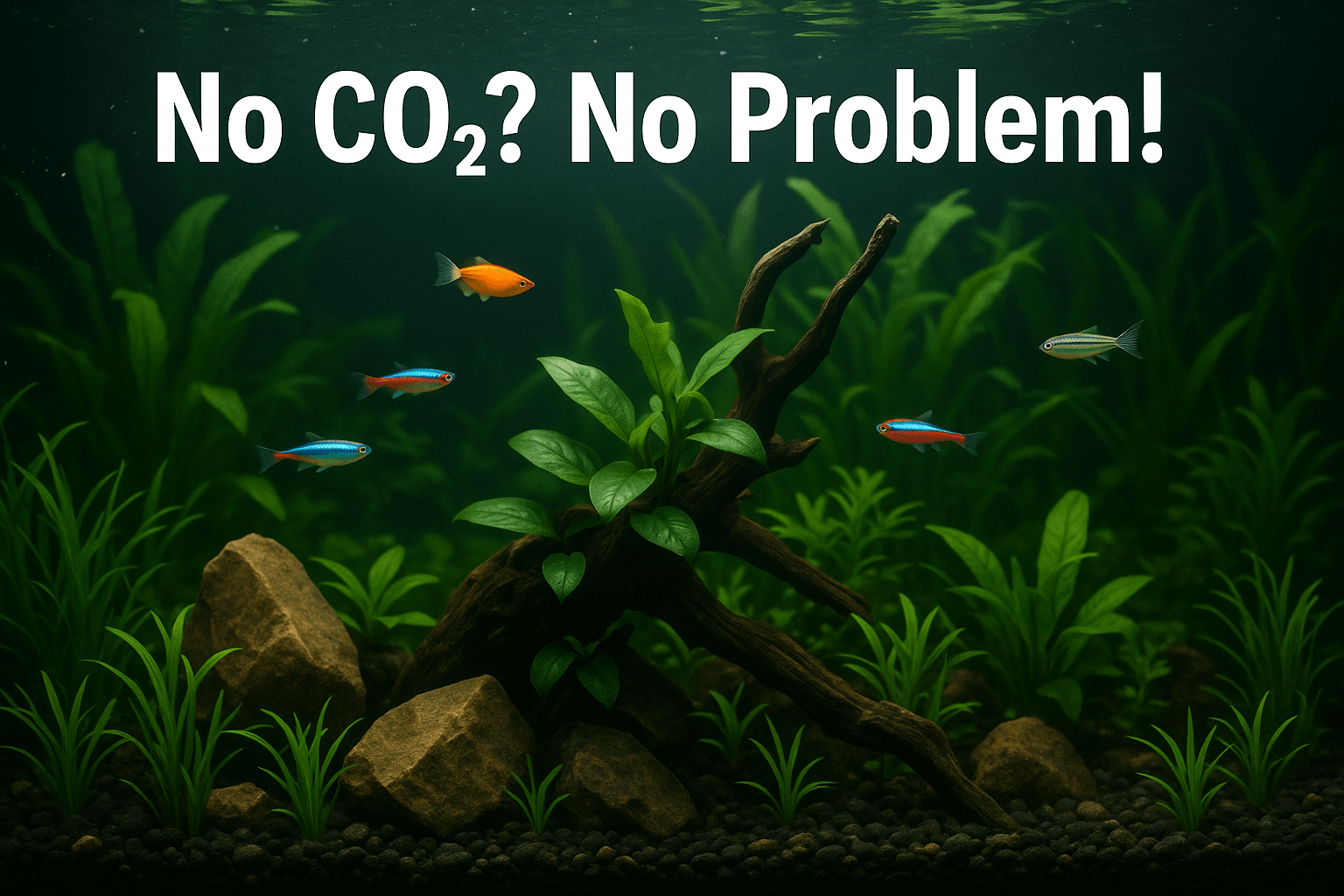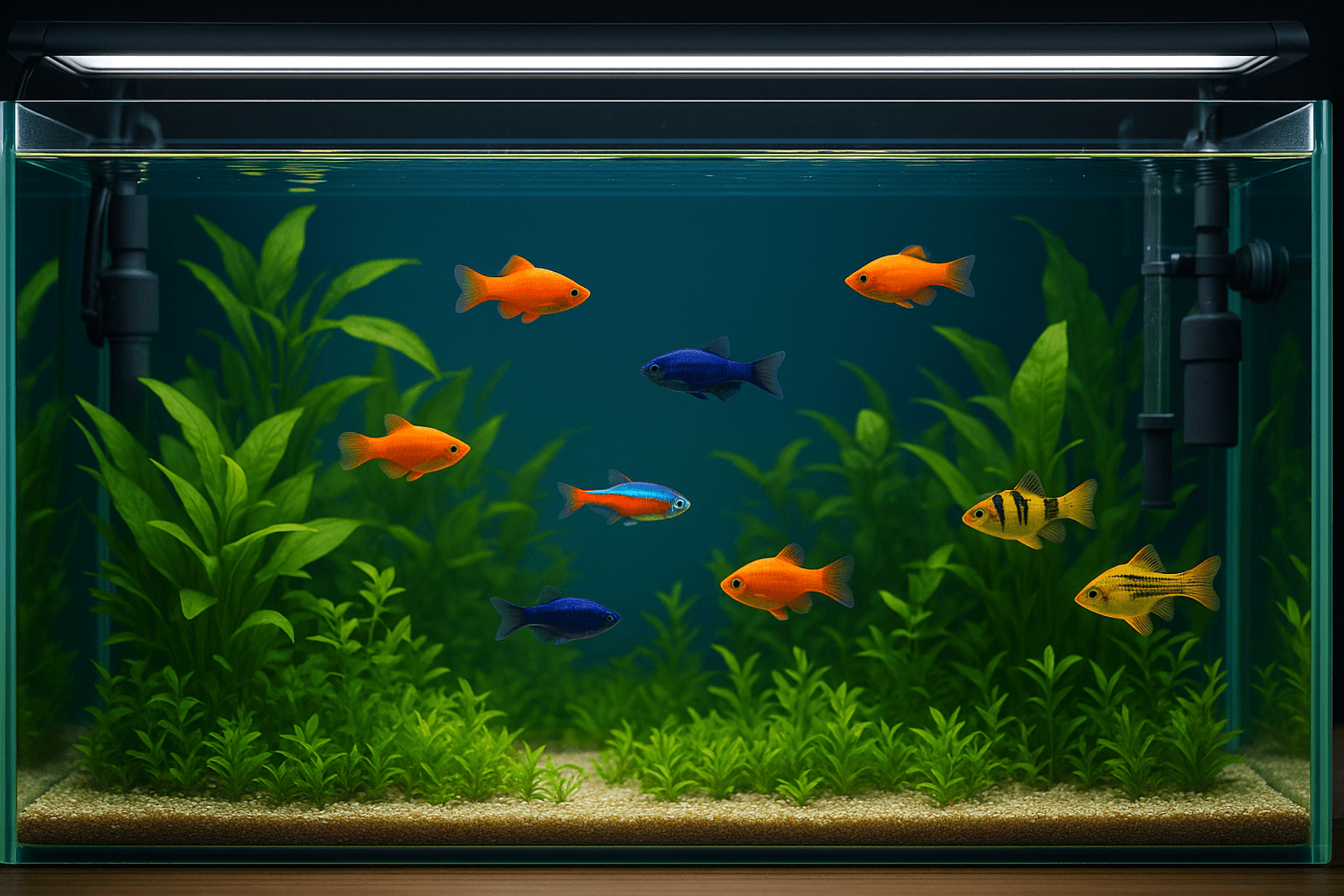
Have you ever excitedly set up a new aquarium Beneficial Bacteria, added your fish, only to find them gasping at the surface or even worse – not making it through the week? If so, you’re not alone. The silent heroes of any successful aquarium are the microscopic beneficial bacteria that work tirelessly to create a healthy environment for your aquatic friends. Without these tiny workhorses, even the most beautiful tank setup can quickly become toxic for its inhabitants.
In this comprehensive guide, we’ll explore the telltale signs that beneficial bacteria are thriving in your aquarium, why they’re absolutely essential, and what to do if your tank seems to be lacking these crucial microorganisms. Whether you’re a beginner or experienced aquarist, understanding these signs will help you maintain a thriving underwater ecosystem.
What Are Beneficial Bacteria in Aquariums?

Beneficial bacteria are microscopic organisms that form an essential part of your aquarium’s ecosystem. They’re responsible for breaking down fish waste, uneaten food, dead plant material, and other organic debris that accumulate in your tank. These bacteria aren’t just helpful – they’re vital for maintaining water quality and keeping your fish alive.
These beneficial microorganisms primarily live on surfaces throughout your aquarium, including:
- Filter media (sponges, ceramic rings, bio-balls)
- Gravel and substrate
- Decorations and rocks
- Driftwood
- Plant leaves
- Tank walls
What makes these bacteria so special is their role in the nitrogen cycle – the biological process that converts toxic waste products into less harmful substances. Beneficial bacteria include primarily two groups: those that convert ammonia to nitrites, and those that convert nitrites to nitrates.
Read More: 15 Expert Aquarium Technician Tips for Stunning Home Aquariums
The Nitrogen Cycle Simplified
Think of the nitrogen cycle as nature’s waste management system for your aquarium:
- Fish produce waste that releases ammonia (highly toxic to fish)
- Beneficial bacteria type #1 (like Nitrosomonas) consumes ammonia and produces nitrite
- Beneficial bacteria type #2 (like Nitrobacter) consumes nitrite and produces nitrate
- Nitrate is removed through water changes or consumed by live plants
This process doesn’t happen instantly in a new tank. It takes time for these bacterial colonies to establish – a period known as “cycling” your aquarium.
Why Beneficial Bacteria Are Essential for Tank Health
The importance of beneficial bacteria in your aquarium cannot be overstated. Here’s why they’re absolutely critical:
- They prevent toxic conditions: Without these bacteria, ammonia from fish waste would quickly build up to lethal levels, essentially poisoning your fish.
- They create biological stability: A robust colony of beneficial bacteria helps maintain water chemistry balance, preventing dangerous parameter swings.
- They support the food web: Some beneficial bacteria form what’s called “biofilm,” which serves as a food source for certain fish, shrimp, and snails.
- They compete with harmful bacteria: A healthy population of beneficial bacteria helps prevent pathogenic (disease-causing) bacteria from gaining a foothold.
- They allow for sustainable stocking: Without beneficial bacteria, your tank could only safely support a tiny bioload. With them, you can keep more fish in a properly maintained system.
7 Unmistakable Signs Your Tank Has Beneficial Bacteria
How do you know if your tank has developed a healthy colony of beneficial bacteria? Look for these seven reliable indicators:

1. Stable Water Parameters
The most scientific and reliable sign of established beneficial bacteria is consistent water test results. In a properly cycled tank with healthy bacterial colonies:
- Ammonia stays at 0 ppm (parts per million)
- Nitrite stays at 0 ppm
- Nitrate gradually increases between water changes (typically 5-40 ppm)
Regular testing is crucial, especially in newer tanks. If you consistently see zero ammonia and nitrite despite adding fish food or having fish in the tank, your beneficial bacteria are likely doing their job effectively.
2. Completed Nitrogen Cycle
A successfully cycled tank has completed the entire nitrogen cycle process. During initial cycling, you’ll typically observe:
- An initial ammonia spike
- Ammonia drops as nitrite rises
- Finally, nitrite drops as nitrate rises
Once you see this pattern complete – with ammonia and nitrite at zero and only nitrate showing on tests – you can be confident that your beneficial bacteria colonies have established.
3. Healthy and Active Fish
When beneficial bacteria are thriving, your fish will show it through their behavior and appearance:
- Swimming actively throughout the tank
- Normal breathing patterns (not gasping at the surface)
- Good appetite and normal feeding behavior
- No signs of stress like clamped fins or hiding
- Bright colors and clear eyes9
Fish that appear relaxed and healthy are often a good indicator that your water quality is being maintained by beneficial bacteria.
4. Presence of Biofilm
Biofilm is a thin, slimy layer that forms on surfaces in your aquarium. While it might not look appealing, it’s actually a sign of a healthy bacterial ecosystem:
- Look for a clear or whitish film on driftwood, rocks, or decorations
- It feels slightly slippery when touched
- Some aquarium inhabitants like shrimp and snails will graze on it
Biofilm contains beneficial bacteria and other microorganisms that contribute to your tank’s biological filtration system. Its presence, especially on new driftwood or decorations, indicates that beneficial bacteria are colonizing surfaces in your tank.
5. Clear Water (Most of the Time)
Generally, established tanks with good beneficial bacteria populations maintain relatively clear water. However, water clarity alone isn’t a perfect indicator – many factors affect water clarity beyond bacteria9.
One temporary exception: when first adding beneficial bacteria supplements to an established tank, you might notice temporary cloudiness that typically resolves within 24-48 hours as bacteria find their way to surfaces.
6. Modest Algae Growth
Some moderate algae growth can actually be a positive sign in a maturing aquarium. It indicates:
- Nutrients are being processed in the tank
- The ecosystem is developing
- The biological processes are active
While excessive algae is problematic, some light algae growth on glass or decorations in a new tank often coincides with the establishment of beneficial bacteria colonies.
7. Resilience to Minor Disturbances
A well-established bacterial colony provides stability that helps your tank recover from minor issues:
- Skipping a water change doesn’t cause immediate problems
- Small amounts of excess food don’t create ammonia spikes
- The system can handle small increases in bioload
- Recovery from temperature fluctuations is quicker
This resilience is a hallmark of a well-established bacterial ecosystem.
How Long Does It Take for Beneficial Bacteria to Establish?
Patience is essential when waiting for beneficial bacteria to colonize your aquarium. The complete cycling process typically takes:
- 4-8 weeks for most freshwater aquariums
- 2 weeks to 2 months or longer, depending on conditions
- Longer in larger tanks or those with less surface area for bacteria
Multiple factors affect this timeline:
- Temperature (bacteria grow faster in warmer water)
- Surface area available for colonization
- Source of ammonia (fish, food, pure ammonia)
- Use of bacterial supplements
- Water pH and hardness
During cycling, you might notice temporary cloudiness as bacterial populations bloom before finding surfaces to colonize. This is normal and typically resolves as the cycle progresses.
What to Do If Signs Are Missing or Unclear
If your aquarium doesn’t show signs of established beneficial bacteria, don’t panic. Here are steps to take:
Check Your Cycling Method
You need an ammonia source to trigger bacterial growth. Options include:
- Fish food (as it decomposes)
- Pure ammonia (fishless cycling)
- Very small number of hardy fish (fish-in cycling, not recommended for beginners)
Without an ammonia source, bacteria won’t colonize your tank.
Consider Bacterial Supplements
Commercial products can help establish beneficial bacteria more quickly:
- API QuickStart provides nitrifying bacteria that allow for immediate fish addition
- Bio-Cure and similar products can supplement existing bacteria
- Fluval Cycle, Seachem Stability, and others offer solutions for new tanks
While not magic solutions, these products can significantly speed up the cycling process when used correctly.
Optimize Your Filtration
Your filter is home to the largest concentration of beneficial bacteria:
- Choose filters with good biological filtration capacity
- Never clean filter media with tap water (chlorine kills bacteria)
- Maintain good water flow through your filter
The right filtration setup gives beneficial bacteria plenty of surface area to colonize.
Be Patient and Monitor
The most common mistake is rushing the process:
- Test water parameters regularly
- Don’t add fish until ammonia and nitrite are consistently at zero
- Understand that different tanks cycle at different rates
Consistent monitoring is key to tracking the establishment of beneficial bacteria.
Read More: Solutions When Your Fish Are Gasping at the Water’s Surface
FAQs About Beneficial Bacteria in Aquariums
Can I add fish immediately after adding beneficial bacteria products?
Some products like API QuickStart claim to allow immediate fish addition, but results vary. For best results, add only a few hardy fish initially and monitor ammonia and nitrite levels daily, even when using bacterial supplements.
How do I know if my tank is fully cycled?
Your tank is considered cycled when ammonia and nitrite consistently test at zero, while nitrates slowly increase between water changes. After three weeks with these results, you can typically consider your tank cycled.
Why does my water become cloudy when I add beneficial bacteria?
Temporary cloudiness after adding bacterial supplements is normal and indicates a bacterial bloom. This happens when free-floating bacteria multiply before finding surfaces to colonize. The cloudiness typically clears within 24-48 hours as bacteria attach to surfaces.
Do I need to “seed” bacteria from other established tanks?
While not absolutely necessary, “seeding” with media from established tanks can significantly speed up cycling. Beneficial bacteria don’t appear spontaneously-they need to come from somewhere, whether established media, commercial products, or naturally occurring (but slower) environmental sources.
What happens if I don’t cycle my aquarium?
Without cycling, ammonia and nitrite will quickly build up to toxic levels, causing “New Tank Syndrome.” Fish will show signs of stress, may become ill, and could die. Even hardy fish will suffer in an uncycled tank.
Conclusion
Recognizing the signs of beneficial bacteria in your aquarium is a crucial skill for any fish keeper. From stable water parameters to healthy fish behavior, these indicators help ensure your underwater ecosystem is functioning properly. Remember that establishing beneficial bacteria takes time and patience-there are no true overnight solutions.
By understanding and nurturing these microscopic allies, you’re creating a stable, healthy environment where your aquatic pets can thrive. Regular maintenance, appropriate feeding, and good filtration practices will help maintain your beneficial bacterial colonies for years to come.
Next time you look at your clear, vibrant aquarium with healthy, active fish, take a moment to appreciate the invisible workforce making it all possible. Your beneficial bacteria might be microscopic, but their impact on your aquarium’s success is anything but small.


